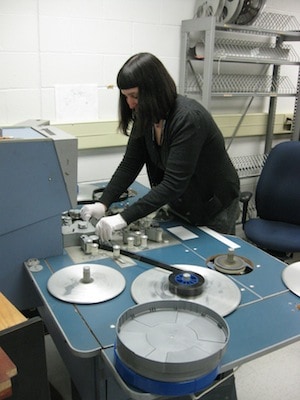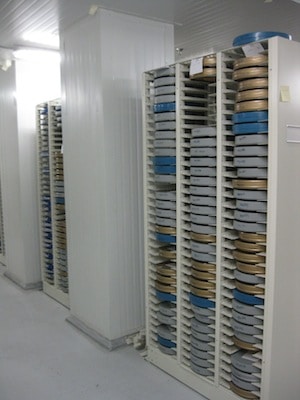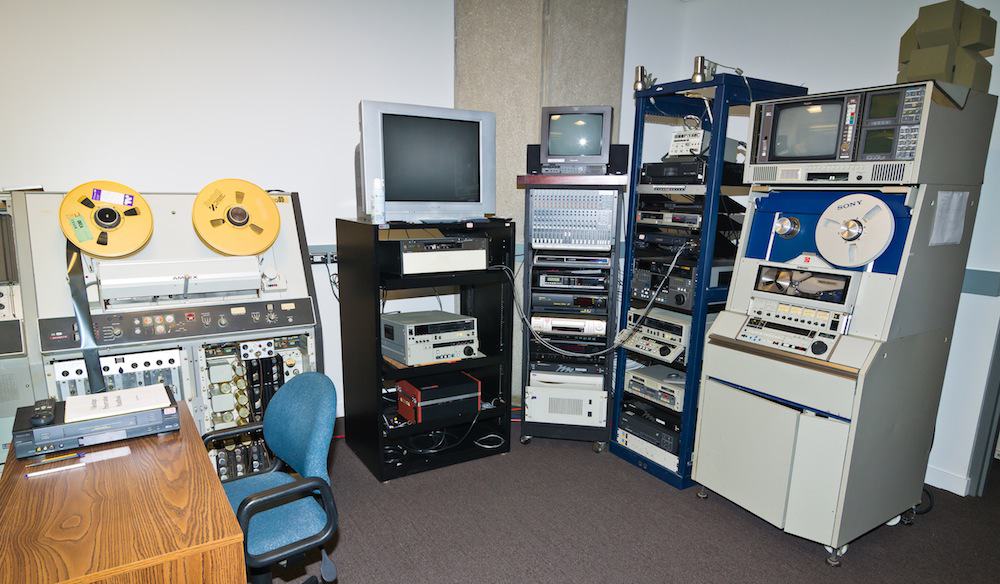When most people think of the Media Commons, the first image that comes to mind is a bygone era of DVDs to loan. Yet this unassuming small department, located on the third floor of Robarts, boasts an astonishing array of material that can be useful for students of all subject areas.
Divided into three sections, the Media Commons has extensive holdings spanning the areas of broadcasting, film, animation, advertising, popular music, photography, acting, spoken word and performance art, popular culture, Judaica, and teaching. The circulating film library alone has 17,000 titles, while their collection of microfilm numbers over several million.
 The Media Archives, stored in a climate controlled cold vault at Woodsworth College, ranks as the largest repository for archival and contemporary audio visual research in any Canadian university. These archives include raw footage, budgets, financial statements, research notes, and anything else related to production. “We’ve got this ongoing program called ‘Films from the Archives’ and we do a public evening where we show something we think might be popular — they even go beyond the university community,” explains Brock Silversides, the director of the Media Commons. Last week, they hosted a Degrassi trivia night, with a documentary on the making of the show, in honour of the Media Commons’ extensive collection of Epitome Pictures.
The Media Archives, stored in a climate controlled cold vault at Woodsworth College, ranks as the largest repository for archival and contemporary audio visual research in any Canadian university. These archives include raw footage, budgets, financial statements, research notes, and anything else related to production. “We’ve got this ongoing program called ‘Films from the Archives’ and we do a public evening where we show something we think might be popular — they even go beyond the university community,” explains Brock Silversides, the director of the Media Commons. Last week, they hosted a Degrassi trivia night, with a documentary on the making of the show, in honour of the Media Commons’ extensive collection of Epitome Pictures.
“We take film very seriously. It’s a huge part of our history and culture,” says Silversides. This dedication to the preservation and promotion of the value of film is evident in the Media Commons’ commitment to the accessibility of their materials. “Because in our archival collections we have almost every format that has ever been manufactured, whether that’s film, or video, or audio, we have to have the playback machines,” says Silversides. “You don’t find this in every archival institution — a lot of them collect, but don’t know how to play it back, which is kind of weird.” In keeping with this belief, the Media Commons has made a point of collecting as many outdated and current playback machines, in order to ensure all their material is usable.
When asked about the common misconceptions that the collections at the Media Commons are geared towards film majors, Silversides is bewildered. “No, no that’s just one part of these collections. I mean, content matters too!” exclaims Silversides. “For example, we’ve got the collections of Patrick Watson, who was a broadcast journalist, and he worked his way up to the president of CBC. We’ve got all the material relating to his 1980s series called The Struggle for Democracy, including the full interviews with politicians and philosophers.” This includes an interview with Muammar Ghaddafi about democracy, highlighting one of the most important and unique facets of these collections — this material isn’t available online.
 “There’s this misconception that everything that is important, or worth something, has been digitized and is available online but that is so wrong” says Silversides. The digitization process is very expensive, and with materials numbering in the millions, it will take several years to make the majority accessible.
“There’s this misconception that everything that is important, or worth something, has been digitized and is available online but that is so wrong” says Silversides. The digitization process is very expensive, and with materials numbering in the millions, it will take several years to make the majority accessible.
For those that believe that film is simply an art form without real substance, the Media Commons is a stark wake-up call. “There’s always people that say ‘Ah, it’s just popular culture. Who cares that much?’” muses Silversides. “But no, it’s more than popular culture — it is our culture! It’s not this little frill on the side. It’s a huge industry, and so much of what people make art about, that is our culture.”
With comfortable viewing booths, a bookable theatre, and onsite technicians to help with the more obsolete machines, the Media Commons works to make their collections user-friendly. Dedicated to having their materials used and promoting the use of film and other media in research, the Media Commons is a great tool to for students looking to incorporate art into their work.


